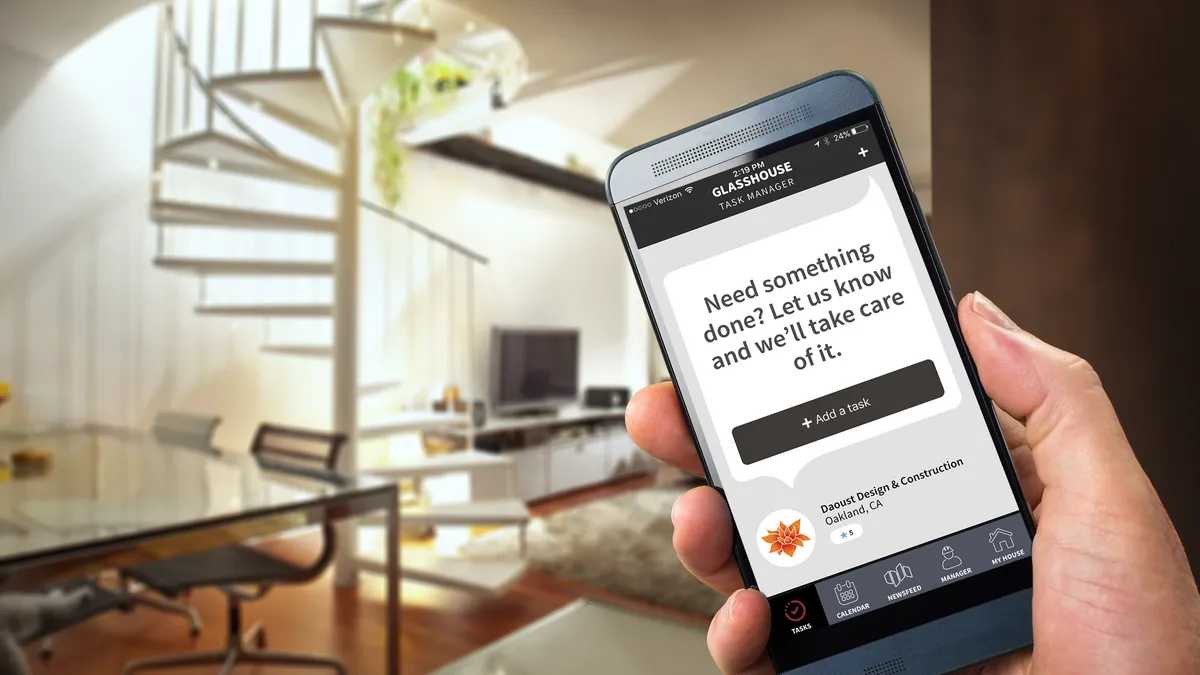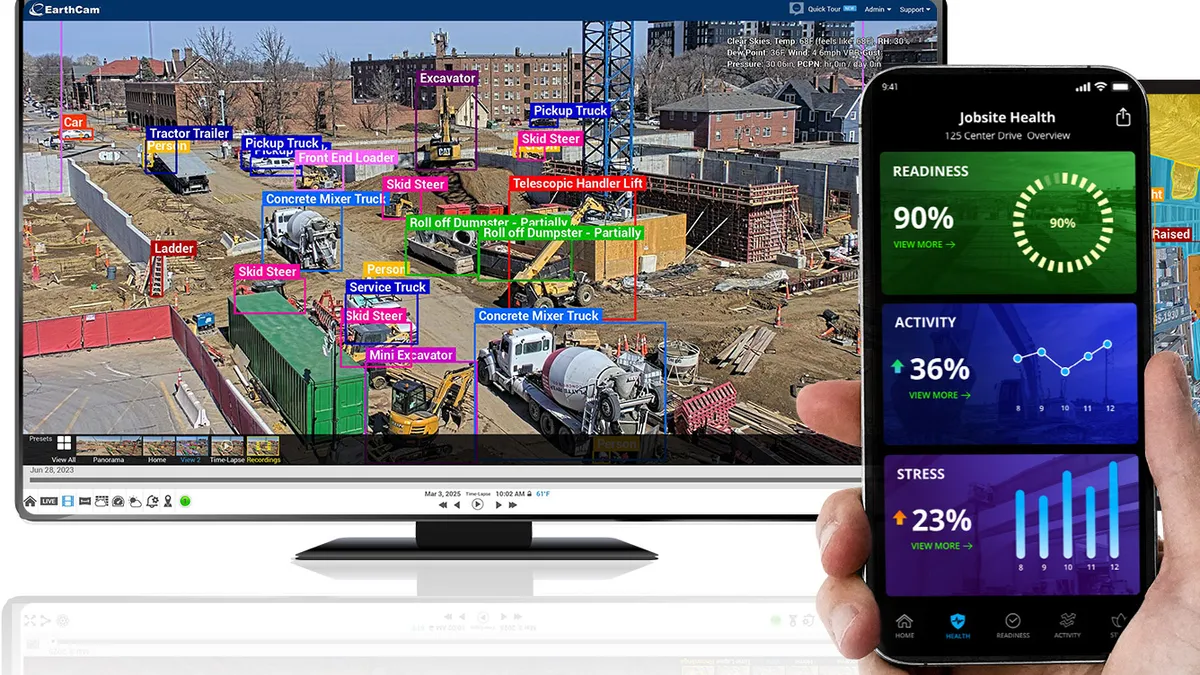Builders know that investing in a relationship with a client today can lead to more business down the line.
“You always want your company’s name to be viewed well in the public eye,” said Nicole Murray, chief operating officer of John Burns Real Estate Consulting. “Most builders do feel a very strong sense of what they do and how it affects people and how it contributes to the American Dream.”
As a result, most stay in touch with homebuyers through the warranty period to help tie up loose ends, resolve major issues and provide a basic roadmap for taking care of what could be the largest purchase they’ll ever make. But that relationship is typically short-lived — at least relative to the life of the home and how long owners typically stay there.
Today, however, more builders are exploring ways to continue that relationship, and they are relying on a mix of tried-and-tested and high-tech methods to get there.
New tech for relationship management
Builders have long used personalized emails and phone calls as well as general print and digital direct-marketing campaigns to keep in touch with clients and reach new ones. Glasshouse, a new, consumer-focused CRM, wants to change that.
The cloud-based software platform launched last fall to help owners maintain contact with builders, and vice-versa. As the products and systems that make up homes today become increasingly complex — such as through the inclusion of LED lighting and internet-connected controls — owners often aren’t as able to troubleshoot basic fixes as they used to be, Glasshouse founder and CEO Shannon Bloemker said.
“Nobody knows your house better than your builder, so what better person to help you manage it?” she said.
Glasshouse partners with general contractors, who use the software to manage project work. While it is meant to be the single point-of-contact for their clients, the software can be used to create a paperless homeowner’s manual, deliver custom email newsletters and automate routine client visits. It also provides mobile work order administration and online payment processing, and houses a product database that gives builders information about a home’s appliances and materials.
Homeowners, in turn, can purchase a subscription to the software and access their account through a desktop computer or smartphone. They can also use the service to reach out to the builder by submitting a task request or messaging them directly.
“I wanted to have a way of being able to keep track of the work that has been done on your house,” Bloemker said. “It’s better to have this cloud-based system with all this information than to have a shoebox full of receipts and owner’s manuals.”
Glasshouse software can also act as a useful reference tool when the owner sells the home or does a major renovation. The builder can store documents such as appliance warranties, building material information and even the deed to the home in the system, making the house’s specifications and maintenance history readily accessible and protected from physical damage.
Jed Daoust, founder and CEO of Oakland, CA–based Daoust Design and Construction, uses Glasshouse to check in on clients quarterly and to schedule routine maintenance jobs. He said such technology can provide “risk-relief” for the homeowner while offering his team the opportunity to pitch the client on a larger project down the road.
Daoust said he measures the value of any client outreach in the number of referrals it brings in.
“It’s about making sure the customers are so happy that they talk about the service,” he said. “We don’t need to promise to be all things to all people, and we’re not saying we’ll take care of literally everything. We’re just going to help make sure things aren’t broken.”
Where technology fits
Glasshouse currently operates on case-by-case basis, with some builders on a tiered pricing program and other, typically larger, firms paying a monthly fee. For new builders, Bloemker said, the cost is roughly 2% to 5% of the firm’s gross receipts from business generated through the system — meaning if the builder isn’t making money, Glasshouse isn’t either.
Still, not every builder can afford to use subscription-based software and others are content to stick to existing digital methods, like social media and email, or traditional pen-and-paper.
For Daoust, social media also plays a role in extending the builder-owner relationship beyond the length of the contract, from befriending clients on Facebook to placing advertisements on popular social networking websites.
Allison King, division vice president of Cary, NC–based Garman Homes, said her firm looks to maintain the builder–buyer relationship by reaching out at the 45-day and 11-month marks to make sure products and systems are working properly and to cover issues that have come up in the interim.
To ensure builders and homeowners are on the same page when it comes to their home’s upkeep, Garman gives buyers a printed owner’s manual at closing. The manual acts as a kind of roadmap for the buyer, providing them with a maintenance schedule, detailed care information, a warranty request form and an infographic about the sales, construction and warranty process, which also lives on the company’s website.
Most of Garman’s work is covered up to one year, with a 10-year structural warranty. Still, the company encourages owners to contact them with questions regardless of the timeframe.
“We have not only inspected homes over eight years old, but we have completed repairs as a courtesy past our one-year mark on many occasions," King said. "It's about the relationship and the issue that is being addressed."
While Garman doesn’t have a formal process for checking in with owners, the company’s warranty manager currently uses software developed in-house to schedule monthly check-ins with existing owners. King said the company is setting up a CRM that will allow their builders to check in with homeowners after the sale, either as needed or at set intervals. As the company grows, she added, it could consider software that adds a layer of automation to the builder–buyer relationship.
“The client doesn’t want to feel like an item on a punch list."

Shannon Bloemker
Founder and CEO, Glasshouse
She attributes the firm’s successes with repeat sales and referrals so far to creating strong client relationships and maintaining them through an active presence on Facebook and Instagram, and through personal responses for email and phone communication.
“We look at each buyer as a lifelong relationship,” King said. “Hopefully, we can grow or downsize with them as their life changes and their home needs adapt.”
While there’s no precise set of best practices when it comes to checking in on clients after the home is sold, being proactive about staying in touch is critical, Bloemker said. Periodic email check-ins and mini-home inspections to scout for major structural problems or leaks, for example, can be of huge value to a client.
“Even if [the client] didn’t do the service-plan element, there are things to keep in touch with to make the client feel they weren’t just abandoned after the builder got that last paycheck,” she said. “The client doesn’t want to feel like an item on a punch list."




















